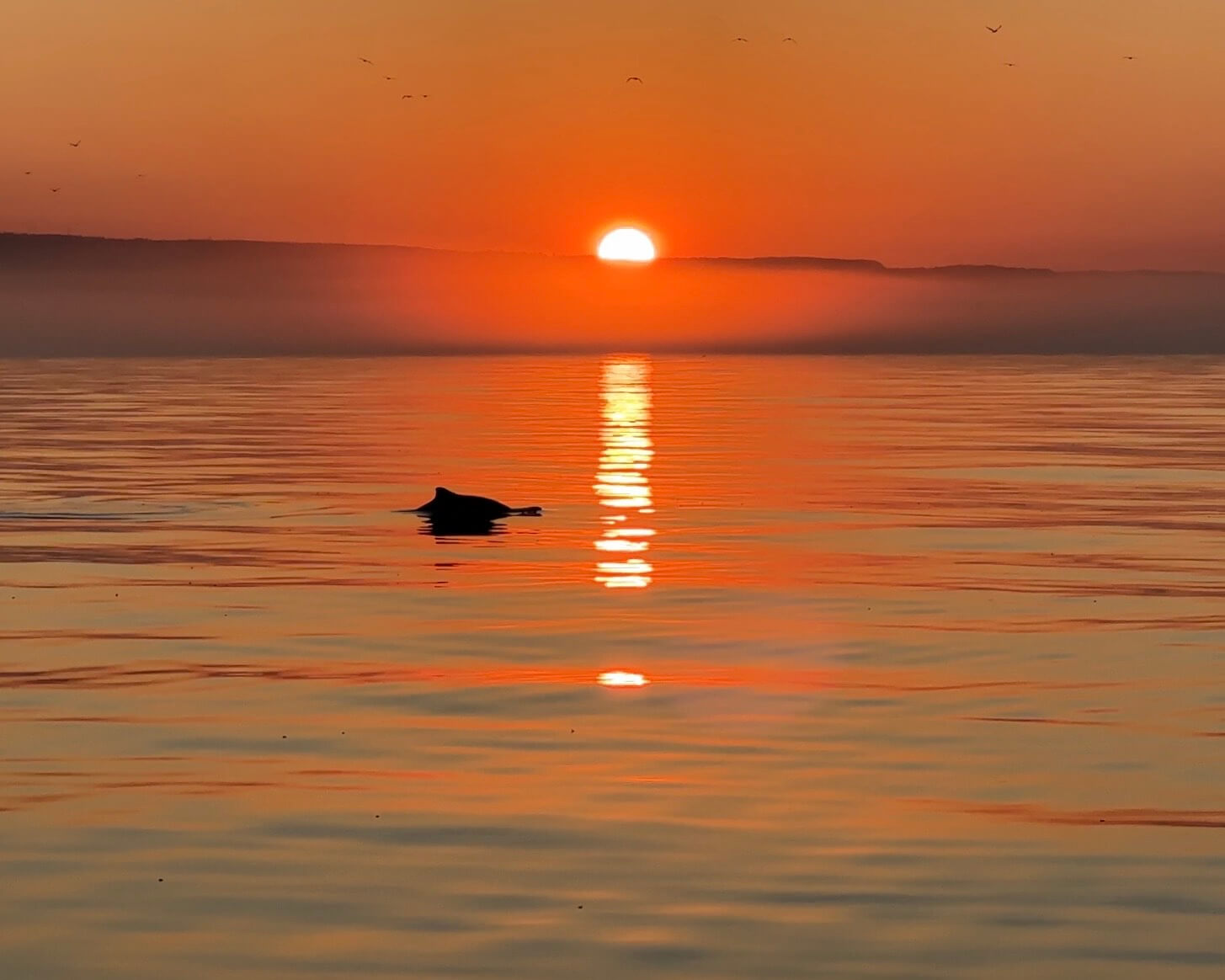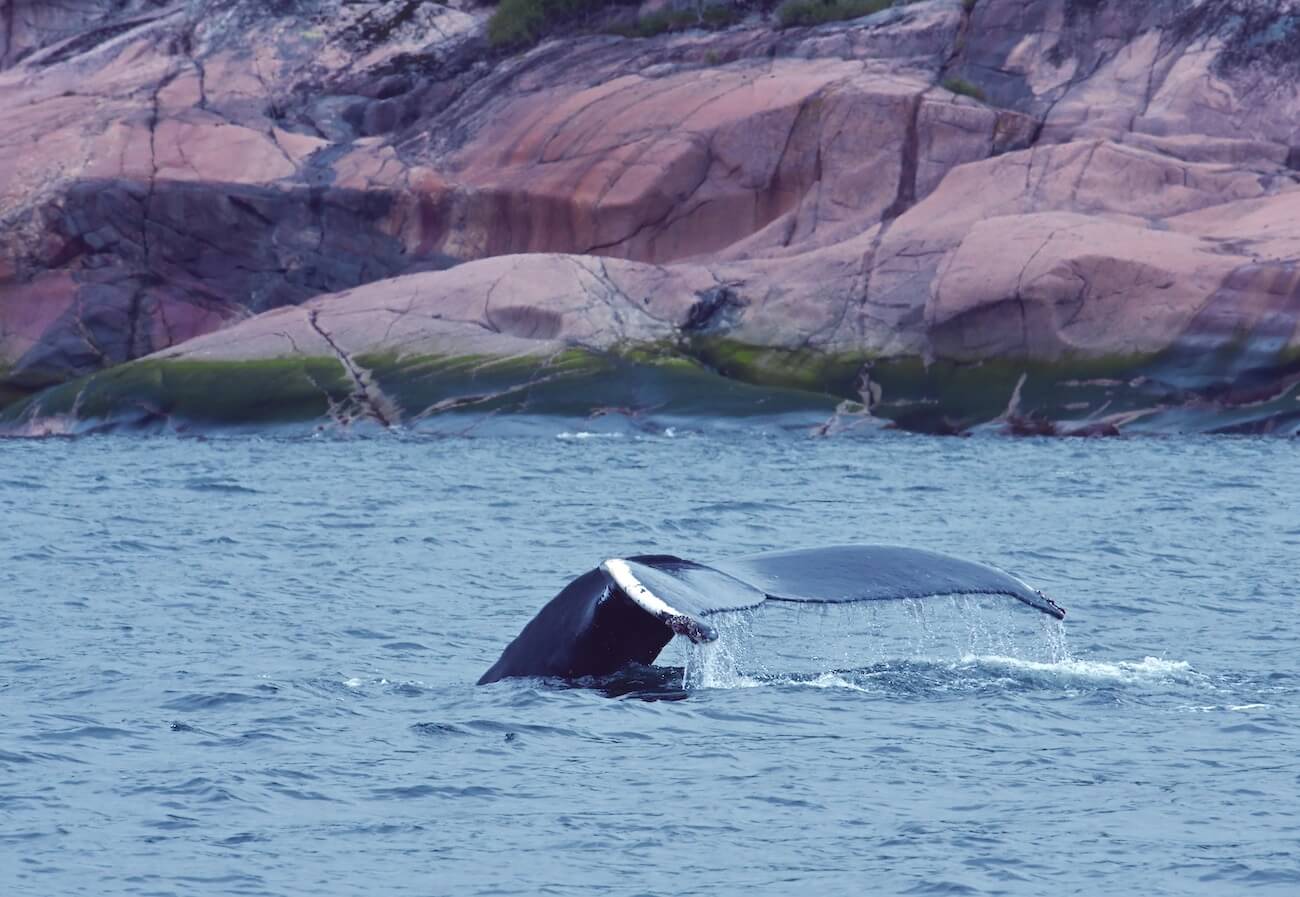Perhaps because they prefer coastal habitats, minke whales are one of the most frequently observed cetacean species in the St. Lawrence. Almost every day, a minke whale has been feeding near the Marine Mammal Interpretation Centre in Tadoussac. Visitors step out of the exhibit for a moment to enjoy this dynamic display just a few metres off the rocks, before re-entering the museum to complete their visit.
“It’s a gift from above,” says one observer at the docks in Baie-des-Sables. Two minke whales swim one behind the other and surface to breath in synchrony. Despite the low tide, they come quite close to shore, swimming back and forth in front of the wharf. “It was the first time I saw such coordinated behaviour,” he says.
In Les Escoumins, a minke whale approaches the rocks. “I was surprised by the white spot on its pectoral fins,” says one photographer. “I finally realized that it was a characteristic feature of this species.” Minke whales all have a white spot on each of their pectoral fins.
In Grandes-Bergeronnes, one resident and her girlfriend are surprised by the rising swell on September 22. Meanwhile, the wind blows the first yellow and red leaves off the nearby trees. All of a sudden, a minke whale breaches. “It was so close I could see its ventral grooves, the texture of its skin!”, she exclaims. The whale breached just once. Its respiratory sequences were probably obscured by the waves. The minke whales observed are probably females. To date, all the biopsies taken from minke whales have shown that they are females. The majority of carcasses were also females, with the exception of a few juvenile males. Where are all the bulls? They are believed to spend their summers in the Atlantic Ocean. Later that day, the two women catch a brief glimpse of a humpback whale, whose breath dissipates in less than a second.
Speaking of humpbacks, on September 20, a whale enters the small bay of the Paradis Marin campground in Grandes-Bergeronnes, just off the boat launch. “We could see it through the clear water,” says a camper. Minke whales, belugas and fin whales are also seen near the rocks, as is a herd of grey seals.
Humpbacks are still grabbing all the attention in the Saguenay-St. Lawrence Marine Park, confirm the captains of whale-watching cruises. Present in large numbers, they are stealing the spotlight from the fin whales. Are the latter less numerous or simply more shy?
In the Sept-Îles sector, the female humpback Hockey is spotted swimming with her calf. Born in 2003, Hockey is the daughter of Fleuret, herself the daughter of Pseudo. This is the first time such a long lineage has been established in the St. Lawrence. Fin whales, harbour porpoises and grey seals have also been frequenting the area.
With the autumn winds, outings outside the natural protection of Gaspé Bay become more difficult. “The whales are still here, we can see their spouts, but they are more difficult to reach,” explains a cruise employee. So when whales enter the bay, as was the case on September 23 and 24, it is a real treat. Depending on the day, one can observe humpbacks, fin whales, minke whales, harbour porpoises by the dozens, white-sided dolphins and even tuna leaping out of the water.In Les Escoumins, a minke whale approaches the rocks. “I was surprised by the white spot on his pectoral fins,” says one photographer. “I finally realized that it was a characteristic feature of this species.” Minke whales all have a white spot on each of their pectoral fins.







